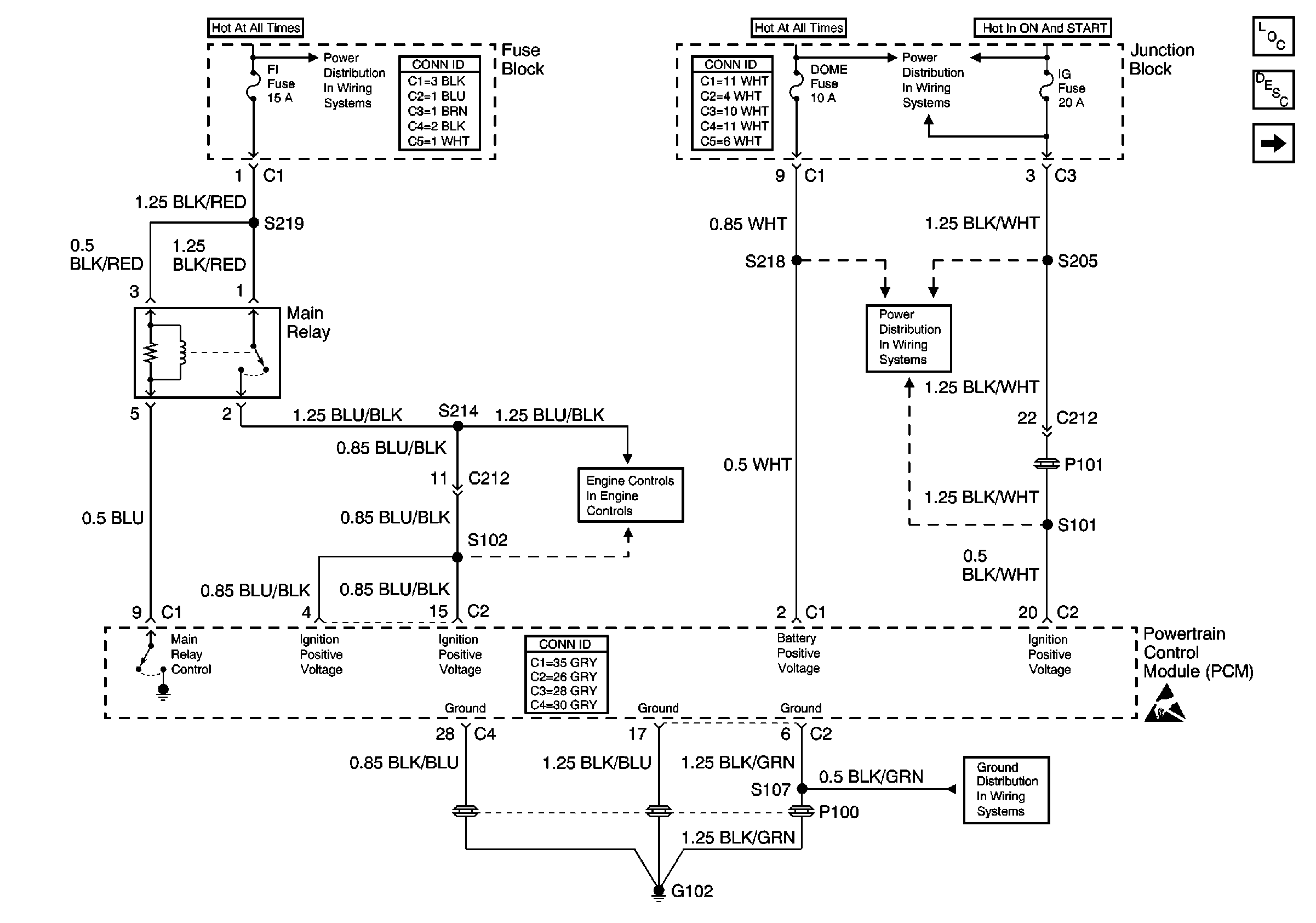Checks
| Action
|
DEFINITION: The engine cranks OK, but does not start for
a long time. The engine does eventually run, or the engine may start but
immediately stalls.
|
Preliminary Checks
| Refer to
Powertrain On Board Diagnostic (OBD) System Check
.
| • | Check that the driver is using the correct starting procedure. |
|
Sensor Checks
|
| • | Inspect for a shifted or fixed engine coolant temperature (ECT)
sensor. Test the engine coolant temperature (ECT) sensor. Use a scan tool
in order to compare the engine coolant temperature reading on a cold
engine with the ambient air temperature reading of the same engine.
A coolant temperature reading that is more than 5°C (9°F)
different than the ambient air temperature reading on a cold engine
may indicate a high resistance in the coolant sensor circuit or in
the sensor. Refer to
Temperature Versus Resistance
. |
| • | Check the throttle position (TP) sensor. A sticking throttle shaft
or a binding throttle linkage will causes a high TP sensor voltage or an open
throttle indication. The PCM may not control the idle if a high TP
voltage is present. Monitor the TP sensor voltage with the scan tool
or a digital multimeter. The indicated voltage should be less than
1.25 volts with the throttle closed. |
| • | Check the canshaft position (CMP) sensor engine reference signal
with a scan tool. Observe the Engine Speed parameter while cranking the engine.
The scan tool should indicate a steady 200-300 RPM while
cranking. If erratic values, such as sudden spikes in the engine
speed, are displayed, the engine reference signal is not stable enough
for the engine to start and run properly. |
|
Fuel System Checks
|
| • | Check the operation of the fuel pump check valve. A faulty check
valve will allow the fuel in the fuel lines to drain back into the
fuel tank after stopping the engine. This condition can cause hard
starts, especially on hot soak restarts. In order to check for this
condition, perform the fuel pressure check in
Fuel System Diagnosis
. |
|
Ignition System Checks
|
| • | Check for adequate secondary ignition voltage with a J 26792
spark tester or an equivalent. |
| • | Check the spark plugs for any of the following conditions: |
| - | A terminal screw that is bent or loose |
| - | A ceramic insulator that has cracks, carbon tracking, or deposits |
| - | A tip insulator that has cracks, carbon tracking, deposits, or
that is loose |
| - | A center electrode that is loose |
| - | An incorrect spark plug gap that is too large or too small |
| • | Check for loose ignition coil connections. |
| • | Check all the ignition system electrical connections. |
|
Additional Checks
|
| • | Check for no crank signal to the PCM. In order to provide improved
cold engine starting, the PCM delivers a richer fuel injector pulse on a cold
engine when the crank signal is present. Observe the Starter Switch
parameter on the scan tool while cranking the engine. A faulty crank
signal circuit will NOT cause a no start, only a longer start time under
harsh conditions. |
| • | Check for service bulletin updates or information. |
|

